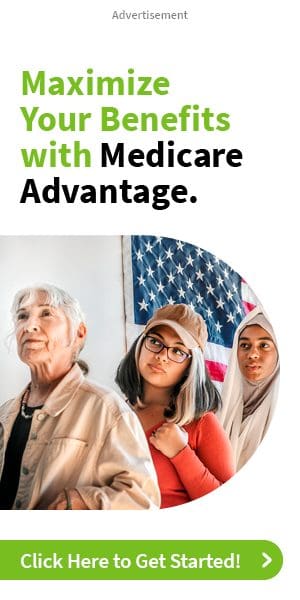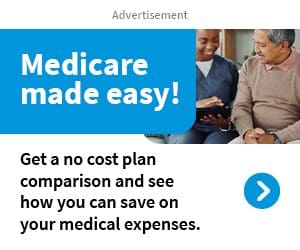Key Takeaways:
- Navigating Medicare Part D can be simplified by understanding plan options, formularies, and coverage phases.
- Regularly reviewing your plan during the Medicare open enrollment period can help ensure it meets your prescription drug needs.
Need Help with Medicare Prescription Drug Coverage? Here’s Your Step-by-Step Guide
Medicare Prescription Drug Coverage, known as Part D, can be complex, but understanding the basics can help you make informed decisions about your healthcare. This guide will walk you through everything you need to know to navigate the process successfully.
Why You Need Medicare Prescription Drug Coverage
Medicare Part D helps cover the costs of prescription medications, which can be a significant portion of your healthcare expenses. Even if you don’t currently take many medications, enrolling in Part D can protect you from high costs in the future and avoid late enrollment penalties. It’s a safeguard that ensures you have access to necessary medications without bearing the entire financial burden.
Getting Started: Understanding the Basics of Part D
Medicare Part D is available through private insurance companies and can be added to your Original Medicare (Part A and Part B) or included in a Medicare Advantage Plan (Part C) that offers drug coverage. There are two main ways to get Part D coverage:
- Standalone Part D Plan: This supplements Original Medicare.
- Medicare Advantage Plan with Drug Coverage (MAPD): This integrates both health and drug coverage.
Standalone Part D plans are ideal for those who have Original Medicare but need additional drug coverage. Medicare Advantage Plans (MAPDs) are comprehensive, often including drug coverage along with other medical benefits. When choosing between these options, consider your overall health needs and whether a comprehensive plan might be more beneficial.
How to Enroll in Medicare Part D Without the Headache
Enrolling in Medicare Part D can be done in several ways:
- Online: Use the Medicare Plan Finder tool on Medicare.gov.
- By Phone: Call Medicare or the plan provider directly.
- Mail: Complete a paper enrollment form.
When enrolling, ensure you have your Medicare number and the start dates for your Part A and/or Part B coverage. Additionally, keep a list of your current medications handy. This will help you choose a plan that covers all your prescription needs.
Picking the Right Plan: What You Should Look For
Choosing the right Medicare Part D plan involves considering several factors:
- Formulary: Check the plan’s list of covered drugs to ensure your medications are included.
- Pharmacy Network: Make sure your preferred pharmacy is in the plan’s network.
- Cost: Look at the premiums, deductibles, copayments, and coinsurance to understand your out-of-pocket costs.
The formulary is particularly crucial as it lists the medications covered under each plan. Coverage can vary significantly between plans, so a drug covered by one plan might not be covered by another. Similarly, the pharmacy network is essential because using in-network pharmacies often reduces costs. Always compare the overall cost structure, including any out-of-pocket expenses, to find a plan that fits your budget.
Formulary Explained: Making Sense of the Drug List
Each Medicare Part D plan has a formulary, a list of covered medications. Formularies are divided into tiers that determine the cost of each drug. Generally, lower tiers include generic drugs that cost less, while higher tiers include brand-name and specialty drugs that cost more. Regularly review the formulary, as plans can change their covered drugs and tiers annually.
Understanding the formulary is vital because it impacts both the cost and availability of your medications. Drugs in lower tiers typically have lower copayments or coinsurance. However, higher-tier drugs, including brand-name and specialty medications, can be significantly more expensive. Knowing which tier your medication falls into can help you anticipate your out-of-pocket costs and make informed decisions about your plan.
Managing Costs: Tips to Keep Your Medication Expenses Low
To manage your prescription drug costs effectively:
- Use Generic Drugs: They are often cheaper than brand-name equivalents.
- Preferred Pharmacies: Some plans offer lower copayments at certain pharmacies.
- Mail-Order Options: These can provide a 90-day supply at a reduced cost.
- Assistance Programs: Explore programs like Extra Help, which can reduce costs for those with limited income and resources.
Generic drugs are a cost-effective alternative to brand-name drugs, offering the same therapeutic benefits at a lower price. Preferred pharmacies are also beneficial because they often provide medications at reduced rates. Additionally, mail-order options can be convenient and economical, particularly for maintenance medications. Assistance programs like Extra Help can significantly lower costs for eligible individuals, making medications more affordable.
Navigating the Coverage Phases: What to Expect
Medicare Part D plans have four coverage phases:
- Deductible Phase: You pay the full cost of your drugs until you meet your plan’s deductible.
- Initial Coverage Phase: You pay a copayment or coinsurance for your prescriptions.
- Coverage Gap (Donut Hole): After you and your plan have spent a certain amount on covered drugs, you enter the coverage gap and may pay a higher share of costs.
- Catastrophic Coverage: Once your out-of-pocket costs reach a threshold, you pay a small copayment or coinsurance for the rest of the year.
The deductible phase is the initial period where you pay out-of-pocket until reaching your plan’s deductible. The initial coverage phase follows, where you share the costs with your plan through copayments or coinsurance. The coverage gap, or “donut hole,” is a temporary limit on what the drug plan will cover. Finally, catastrophic coverage provides significant relief by greatly reducing costs after you reach the out-of-pocket threshold. Understanding these phases helps you plan for your expenses throughout the year.
Staying Up to Date: Keeping Your Coverage in Check
Every year during the Medicare open enrollment period (October 15 to December 7), review your plan’s Annual Notice of Change. This document outlines any changes in coverage, costs, or formulary for the upcoming year. Adjust your plan if necessary to ensure it still meets your needs.
Regularly reviewing your plan ensures it continues to meet your needs, especially if there are changes to your health or medications. The Annual Notice of Change provides crucial information about modifications to your plan, allowing you to make necessary adjustments. Staying proactive during the open enrollment period can help you avoid unexpected costs and ensure your plan remains the best option for your needs.
Stay Informed About Your Medicare Part D Plan
Navigating Medicare Part D can seem daunting, but by understanding your options, regularly reviewing your plan, and staying informed about changes, you can manage your prescription drug coverage effectively. Remember, the right plan for you depends on your specific medication needs and budget, so take the time to compare plans carefully.
Contact Information:
Email: [email protected]
Phone: 6695551234










